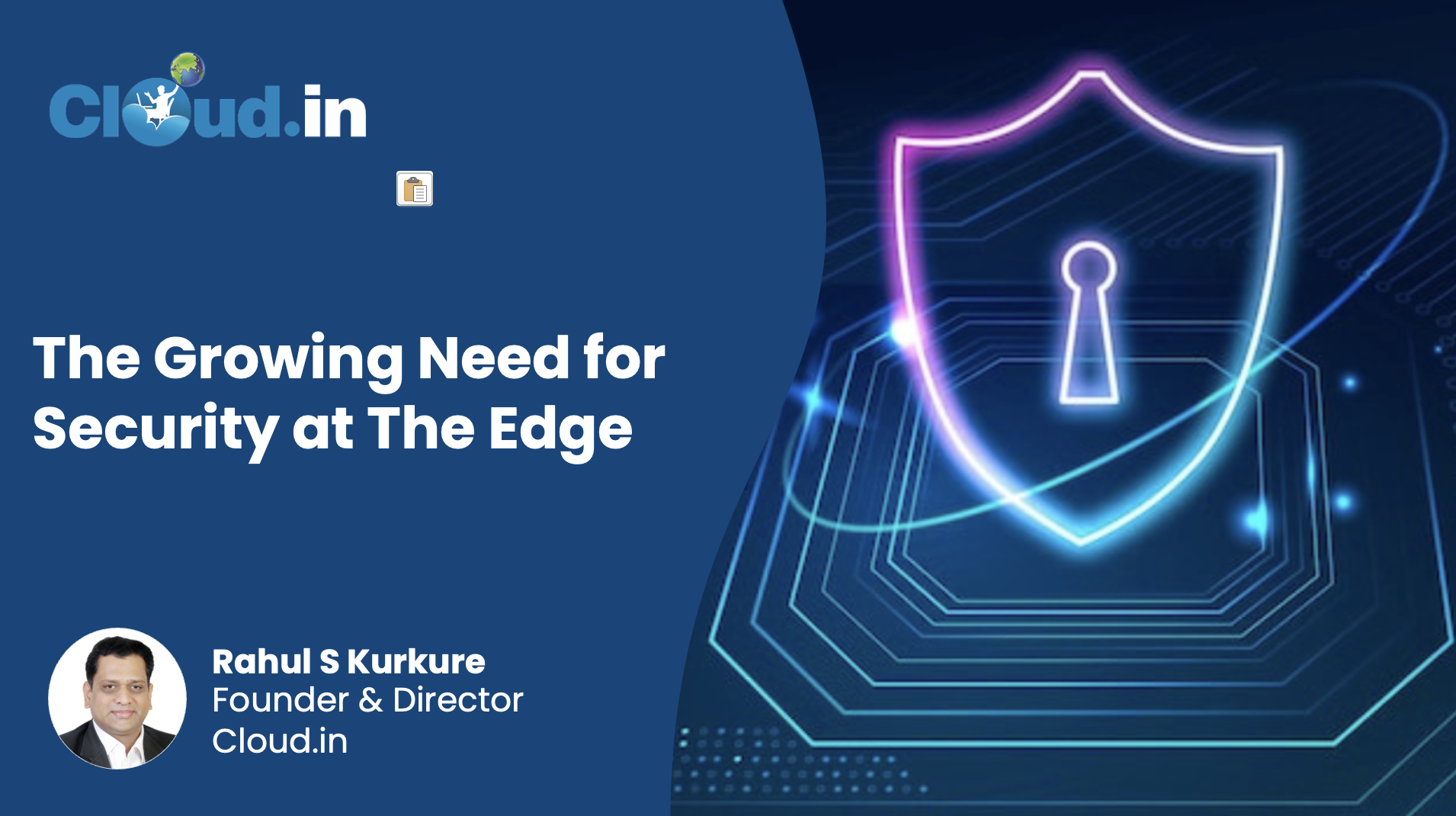The Growing Need for Security at The Edge - Rahul S Kurkure, Founder and Director of Cloud.in

Today’s organizations are inundated with huge volumes of data which is the lifeline of the modern business landscape by delivering of valuable insights for decision making. The ever-transforming technology landscape of this digital era comprises data flowing continuously with more and more devices getting interconnected. However, legacy computing prototype based on a centralized data center where data processing took place, has started to give rise to bandwidth limitations and latency issues due to the flooding of data. This is leading to the moving of data processing and analysis close to the source or origin of data which is known as Edge Computing. While this paradigm is able to deliver real-time insights and is efficient, it also unfolds several security challenges. The legacy security measures that worked well within centralized environments have now begin to face issues with the need for security revamping.
We will explore the need for security at the edge and how it can be
established in this article.
The Edge Landscape
With the rise of IoT devices and the huge volumes of data they produce, traditional data centers are finding it difficult to accommodate, giving rise to the edge landscape. Gartner had predicted by 2025, 75% of enterprise-generated data will be created outside the centralized data centers. IT architects are now taking the data center closer to the data by deploying computing and storage resources at the location where data is produced making edge computing more viable. Although edge computing has numerous benefits, it is laden with several endpoints which have the potential to act as entry points for cyber threats.
Need for Edge Security
Decentralization of data at the edges also means high levels of
monitoring and control as this deployment removes edge computing resources from
physical data centers. The edge devices
are often in less secure locations and could be exposed to theft, physical
tampering, or other environmental factors, making them more vulnerable to
attacks. Maintaining data integrity and privacy can be a challenge with data
especially sensitive information crossing numerous points on its journey from
the edge to the cloud. Moreover, this
transition to the edge away from human oversight can pose serious security
risks.
Yes, with more devices getting connected, more potential endpoints for cyber threats are also getting connected. The number of edge devices and cloud solutions are exponentially increasing, driving the growth of the edge security market. According to Markets and Markets, the global Edge Security Market is projected to be worth USD 51.1 Billion by 2027 from USD 19.2 Billion in 2022, growing at a CAGR of 21.6% during the forecast period.
Securing the Edge
In a decentralized infrastructure, establishing security at the edge
requires a multifaceted approach to eliminate many of the security
challenges. This edge security
safeguards the edges against cyber attacks and data breaches, stopping
unauthorized access to entities attempting to enter the network. Deployment of firewalls and Intrusion
Detection/Prevention Systems at the edge to monitor traffic passing through the
network to detect possible issues, preventing unauthorized access and detecting
malicious activities, will arrest further movement of such traffic.
Data encryption can prevent unauthorized access and when intercepted,
attackers are unable to comprehend.
Devices can be protected through microsegmentation within the local
network, limiting the lateral movement of attackers. This approach prevents a breach in one part
of the network from compromising the whole infrastructure. Those devices that have network access at the
edge should be efficiently managed and controlled too. Artificial Intelligence and Machine Learning
technologies can be leveraged to monitor device behaviors and check if there
have been any deviations from the normal patterns indicating a security breach.
It is crucial to regularly update and patch edge devices to protect them
from exploits. A Remote Management and Monitoring of Edge Devices will ensure
their better functioning.
Physical security measures also have to be implemented to safeguard edge
devices from tampering or theft.
Implementation of Zero Trust Architecture will ensure verification and
authorization for every access request.
It is equally critical to educate users and employees about the security
best practices and to identify potential threats.
Only such a holistic approach that includes technology, processes and people’s understanding can help organizations to fortify their defenses against emerging threats at the edge.
By providing additional security for networks, devices and users with
edge security solutions, the points of security failures are reduced. Risks of threats and attacks also get
lowered. Although edge security is crucial for large and complex networks,
managing it can be challenging and requires expertise for its implementation
which can also be delivered by partnering with a managed services provider.
Edge Security applications are crucial for healthcare, financial
services, government, manufacturing, and logistics among other industry
verticals. The need for security at the
edge is driving organizations to rethink traditional security measures and
develop innovative strategies to safeguard edge devices. Going forward, this will establish data
integrity and privacy in our increasingly connected world.



